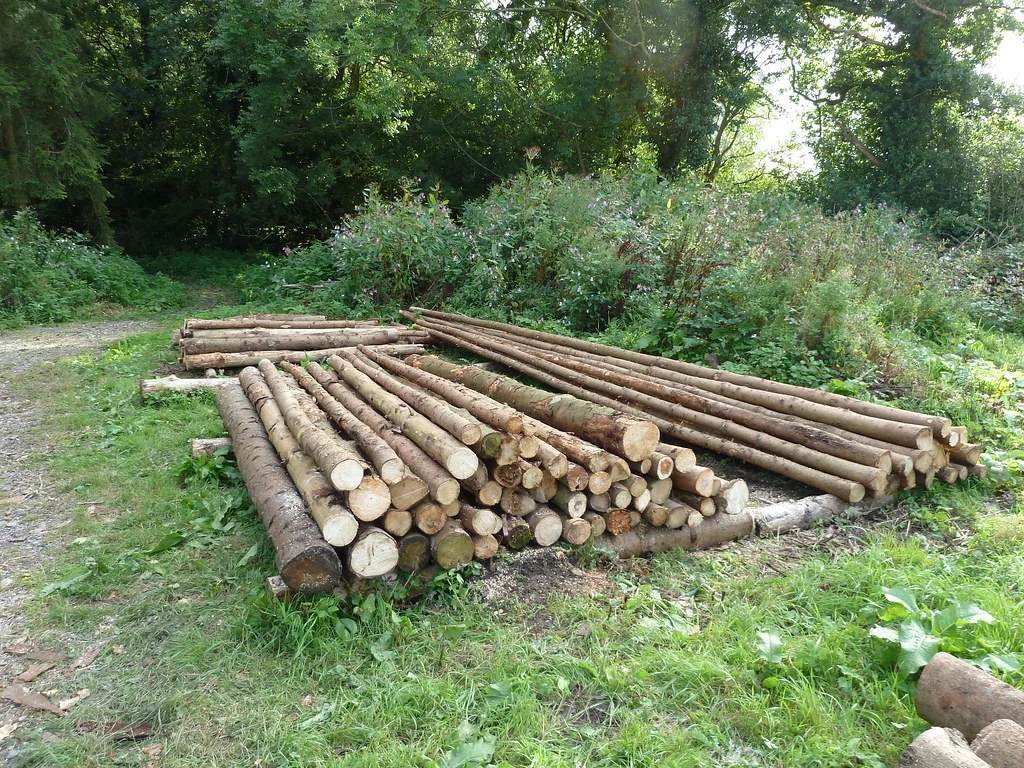What is Timber
What is timber – We know that Timber is a natural resource and it’s come from cutting a tree, so it directly affects by nature. Timber is a type of wood and its uses for various work from another field like a designing purpose, wood work and also used in construction purposes, Timber are comes from a tree and its widely used in construction purposes in ancient times. The main characteristic of timber is durability, strength and better looking appearance.
Mostly timber is used in the constructions for structural purposes, for making a frame of building, beams, columns, and another building components. In a modern life timber are also used for decorative purposes such as creating floors, walls, roofs (fall ceiling), and other show cases. In a timber prevent any kind of damages from decay, insects, and other type of damages in timber. we treat the timber using chemicals and other solutions to increase its immunity and enhance its resistance to decay and other damages.
We can easily cut a timer from different shape and sizes. So in a day timbers are widely used in structural applications, making of furniture, cabinetry items, flooring, and decorative appliances and it occurs from a nature so timber gives us the feel of natural and appearance to spaces. [Pile, Types of Pile]
Timber comes in various types each types of timber have a various properties and each have an own advantages and disadvantages of timber. Some popular timber their own characteristic is given below, oak, pine, mahogany, maple, and teak. The selection of best timber accordingly to their uses are depends upon different factors such as durability availability and uses.

In overall timber plays a important role in construction industries, wood work industries and design purposes. It is also a versatile and renewable resource.
Advantages and disadvantages of timber
Any kind of material have some advantages and some disadvantages, So here we discussed about advantages of timbers disadvantages of timber.
Advantages of Timber
- Timber is a renewable resource and it have a better sustainability. It depends by the nature and it responsible managed for a continuous supply of timber, Timber is good choice of environmentally friendly compared to other non renewable resources.
- Timber are versatility in nature. It can be easily transformed in other design by changing it shaped, cut and joint. Timber is allow for flexibility and design possibility in structures. Timber is used in different purposes such as aesthetic purpose and structural purposes, offering versatility.
- Timber is a natural insulating material it has a good insulating property and provide thermal efficiency. Using of these properties it helps to contributing to energy efficiency and control the indoor by reducing the excess heating or cooling. [Properties of bricks]
- Timber provides a better Aesthetic Appeal. Timber occurs from a nature, so timber gives us the feel of natural and appearance to spaces.
- Timber is light weight in nature and workable it means easily work compared to other construction materials like concrete or steel, Timber are light weight in nature so easily transport and handle one place to another place. Timber facilities for faster construction, reducing by time and labour requirements.
Disadvantages of Timber
- The main disadvantages of timber, It is susceptible of water and moisture absorption, When timber are not protected any adequately solution and timber contact into the water than timber lead to swelling, warping and rotting, so proper treatment such as sealing and proper maintenance are required to protect and enhance there durability, sustainability and resistance to decay. [Class of bricks]
- Timber is a flammable in nature and it’s contributes a lot of the spread of fire. If we use the fire resistant treatment, retardants and proper design in a timber, Fire resistance of timber can be improved to some extent.
- Timber are affect by insects, pests and termites. Some of insect and pests such as termites and wood boring beetles are damage the timber. To avoid this, we do adequate treatment and protection solution are applied. To prevent their infection regular inspection measure are important thing.
- Timber have a limitation of span length. It is a natural resources so easily not available in structural applications and desire length. A large construction their more open spaces may required large and additional supports.
- Each and every type of timber are not available in all areas so price can be varying are location to location. Its depend upon the species, location and quality of timber. Some species of timber are not available in easy and more expensive.
Note – Advantages and disadvantages of timber are depend upon the different factor such as climate conditions, type of timber, species of timber, using construction technique of employed and maintenance practices. With the proper design, treatment and maintenance we can minimize the drawback of timber and maximize the benefits.
Types of Timber
Here Some commonly used Types of timber are given below along their advantages and disadvantages.
- Pine Timber
- Oak Timber
- Mahogany Timber
- Cedar Timber
- Maple Timber
1. Pine Timber
Advantages of pine timber– Pine are easily available and affordable not a costlier. Pine timber have a good properties of strength. It have easy to work and easily stained or painted. grain of pine are straight, making it suitable and ideal structural applications. [Eccentric load]
Disadvantages of pine timber – Pine timber is less durable timber compared to other hardwoods. Timber are affect by insects, pests and termites so it require a special treatment to protect them. Pine is less durable compared to some hardwoods and may require treatment to protect against decay and insect damage. If not properly seasoned and maintained, there is always a risk of it bursting and getting deformed. [Direct Load]
2. Oak Timber
Advantages of oak timber – Oak timber is a high strength timber. It is durable hardwood and dense with excellent properties of strength. Oak timber have a high strength so we used a flooring and high traffic areas. The grain pattern of oak timber is straight and well marked, and it gives a attractive appearance.
Disadvantages of oak timber – Oak timber have high density so it used only be hard, and flooring work. Oak are more expensive compared to other softwoods. which is not workable it required special tools and this tools operate a skill worker. This type of timber is easily shrinking and swelling in certain climates because it absorbed high moisture content.
3. Mahogany Timber
Advantages of mahogany timber – Mahogany timber is available reddish-brown color. This timber has a good resistance to insect and decay damage. It have a high durability and stability because it is hardwood. Generally high quality of furniture, decorative appliance and cabinetry are made by Mahogany timber.
Disadvantages of mahogany timber – Compare to other species of timber, mahogany timber are more expensive. It’s very challenges and special care to preserve it appearance.
4. Cedar Timber
Advantages of cedar timber – Cedar timber is light weight, softwood in nature. It have a naturally resistance to decay, insects and moisture content. It has a very good pleasant aroma and it is also known for it’s beauty. So it is used for decorative purposes, siding, decking and outdoor furniture.
Disadvantages of cedar timber – Compared to other softwoods cedar are more expensive. While it has a natural resistance power and it resist the decay and insects. Cedar is a very soft timber, it’s softness make it more prone to scratches and scuffs easily. [WSM and LSM]
5. Maple Timber
Advantages of maple timber – Maple timber is available a light color with smooth grain and a dense and durable hardwood. Maple has a excellent strength properties and its commonly used by making a furniture and flooring. Maple can be dyed for obtain a various beautiful appearances.
Disadvantages of maple timber – Compared to other hardwood and softwood maple are more expensive timber. It is very difficult to work with this timber because its density, hardness and is require a special tools for work. Over the time period maple timber are change in color into darken.
In above here are few examples of commonly used timber, and there are many types of timber are exists in nature with their own advantages and disadvantages and unique properties. The most important thing which timber we should be used, It’s depend upon the nature of work, how is the budget of project, importance of project and locally availability of timbers.




It’s good that you mentioned how timber is naturally versatile since it offers flexibility that allows us to easily transform it into a brand-new design by changing its shape, cut, and joint. I was thinking of doing DIY work for the bookshelf and cabinet I need for my bedroom at home in Brisbane, so I need the supplies for this soon. I’ll be sure to keep this in mind while I look for a contractor working in Brisbane to contact about the timber products we need soon.
I chose to do additional research on wooden bridge construction because my uncle has a keen interest in it. It’s fortunate that I came across your article because you mentioned that other types of lumber can be used, including oak, which is strong, long-lasting, and dense. I’ll make sure to let him know about this and look into professionals that can assist him.